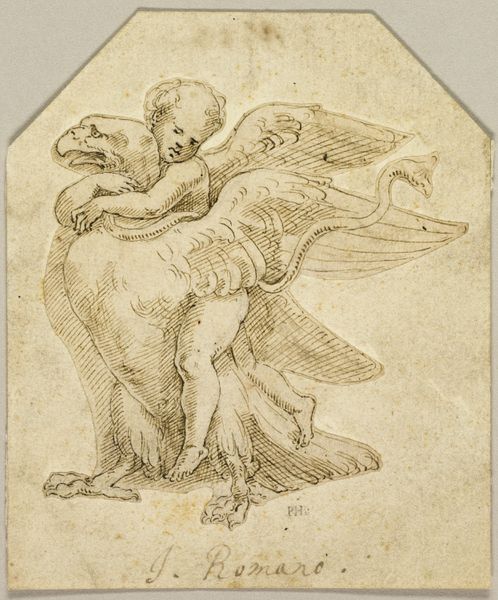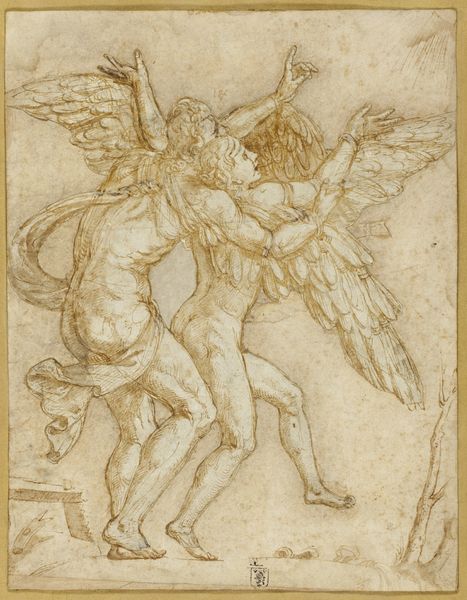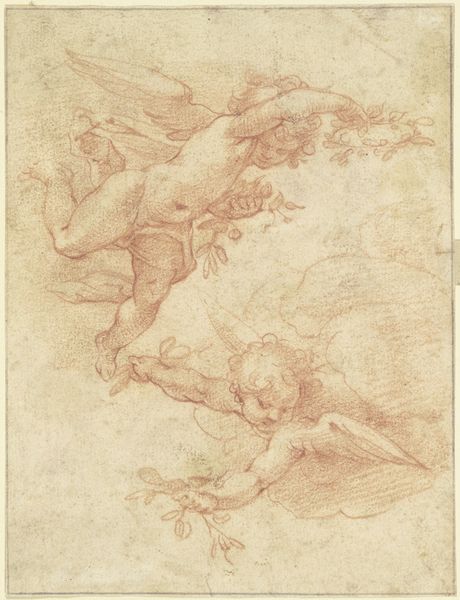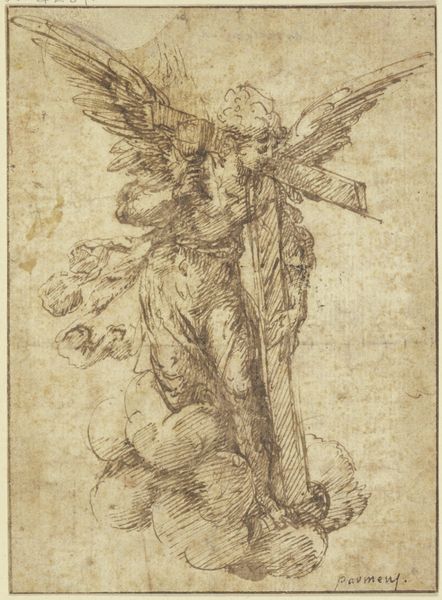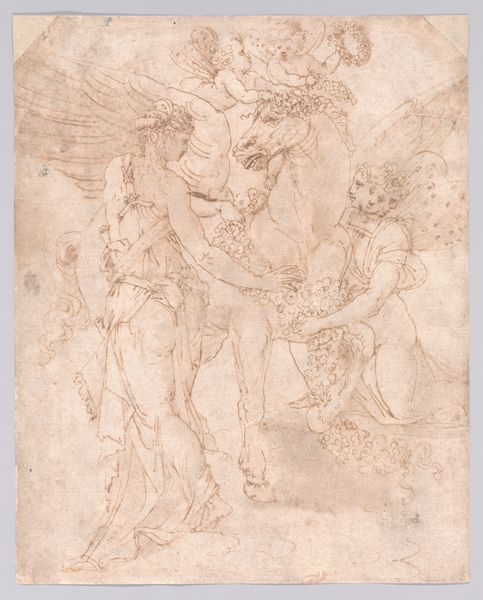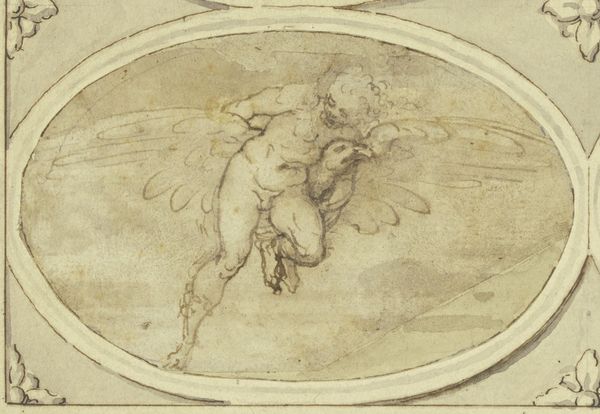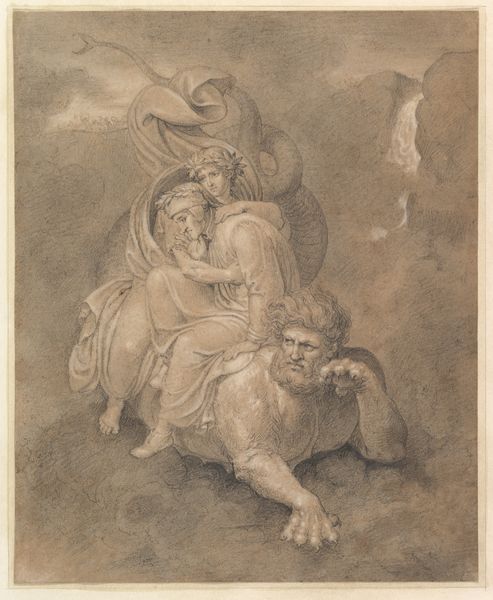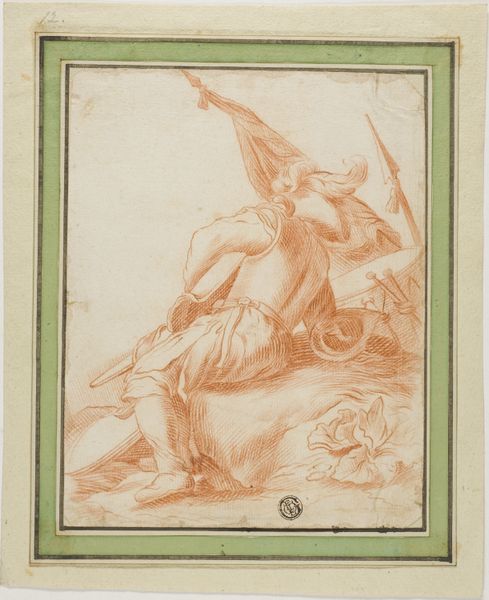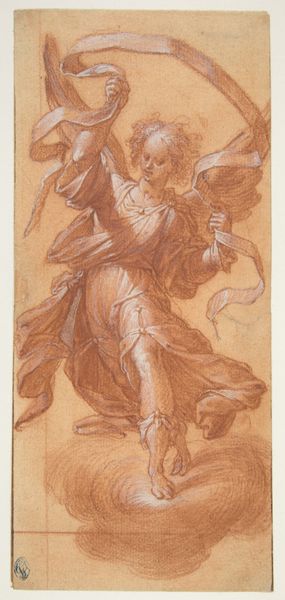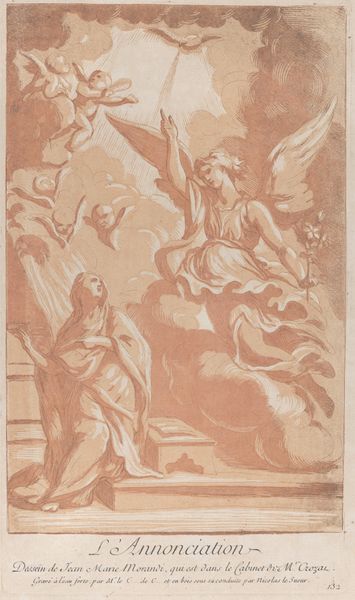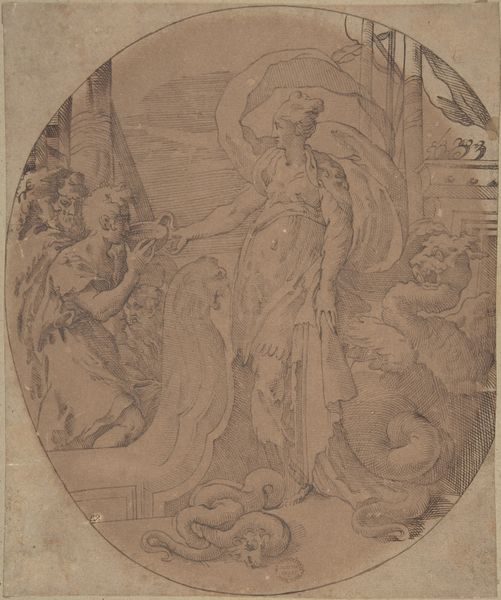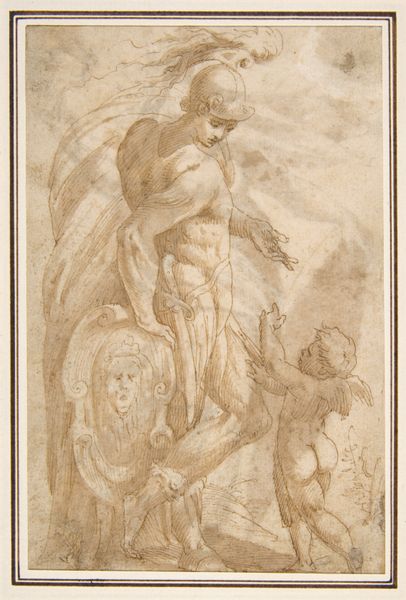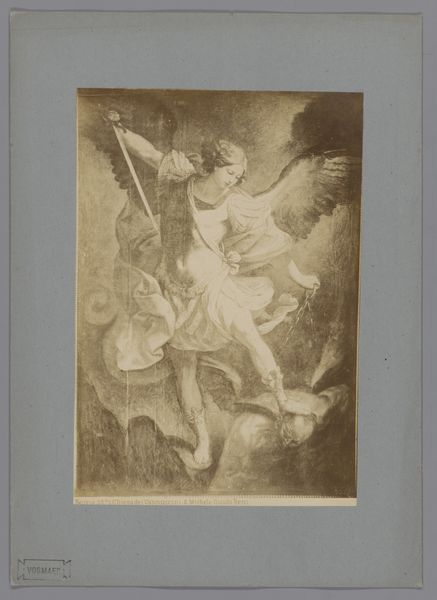
drawing, paper, ink, pen
#
drawing
#
allegory
#
charcoal drawing
#
figuration
#
paper
#
11_renaissance
#
ink
#
mythology
#
pen
#
watercolour illustration
#
history-painting
Dimensions: 343 × 264 mm
Copyright: Public Domain
Curator: Giulio Romano's "Daedalus and Icarus," dating from the early 1530s, is a compelling drawing. What strikes you most about it? Editor: I’m drawn to the figures embracing. There's such raw physicality. It feels like Daedalus is almost desperately trying to keep Icarus grounded, despite those impressive wings. How do you interpret this work? Curator: It’s interesting that you see an embrace. From an activist perspective, I see a commentary on power and control embedded in the myth of Daedalus and Icarus. Consider the sociopolitical context: whose ambitions are valued and whose are deemed reckless? Does the established order benefit from clipping the wings of the young and ambitious? Editor: That's a completely different reading than mine. I hadn’t thought about the power dynamics, only the familial concern. Are you saying Romano intended it to be a political statement? Curator: Perhaps. Or perhaps he unconsciously tapped into a collective anxiety about societal hierarchies and limitations. What if Icarus represents a challenge to those structures? His fall could be interpreted not just as personal hubris, but as a warning against challenging authority. How does that reshape your view? Editor: It certainly complicates my reading! I now see how the image, beyond the immediate familial interpretation, speaks to wider concerns about freedom, authority, and the price of ambition, and perhaps whose ambitions get stifled in society. Thank you! Curator: Indeed, exploring those tensions helps us better understand not only Romano’s work but the social structures that continue to shape our world.
Comments
No comments
Be the first to comment and join the conversation on the ultimate creative platform.
